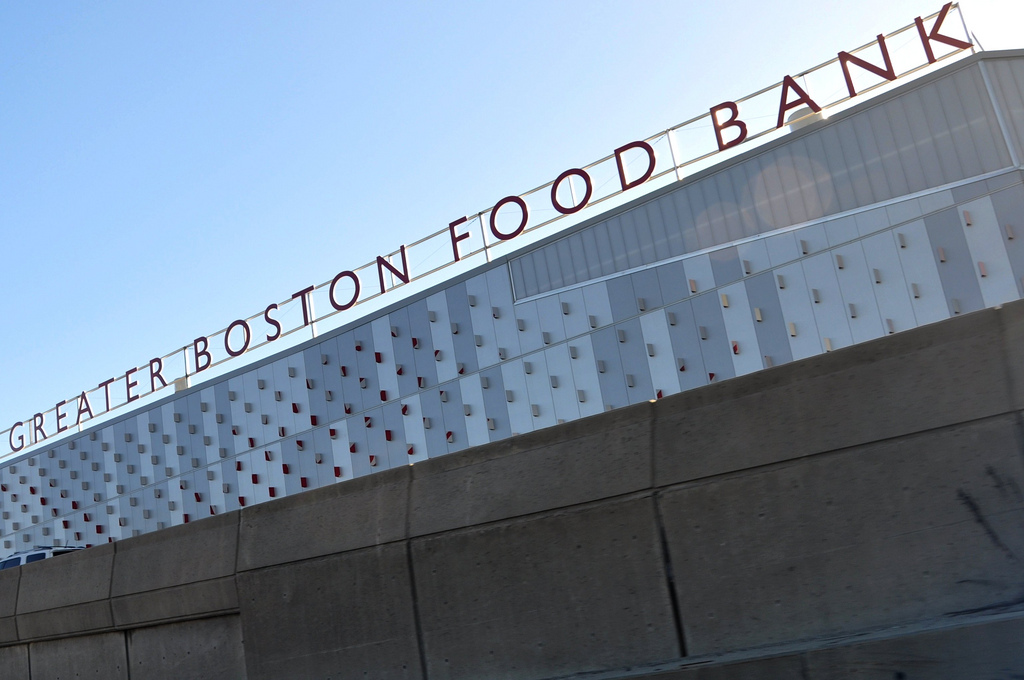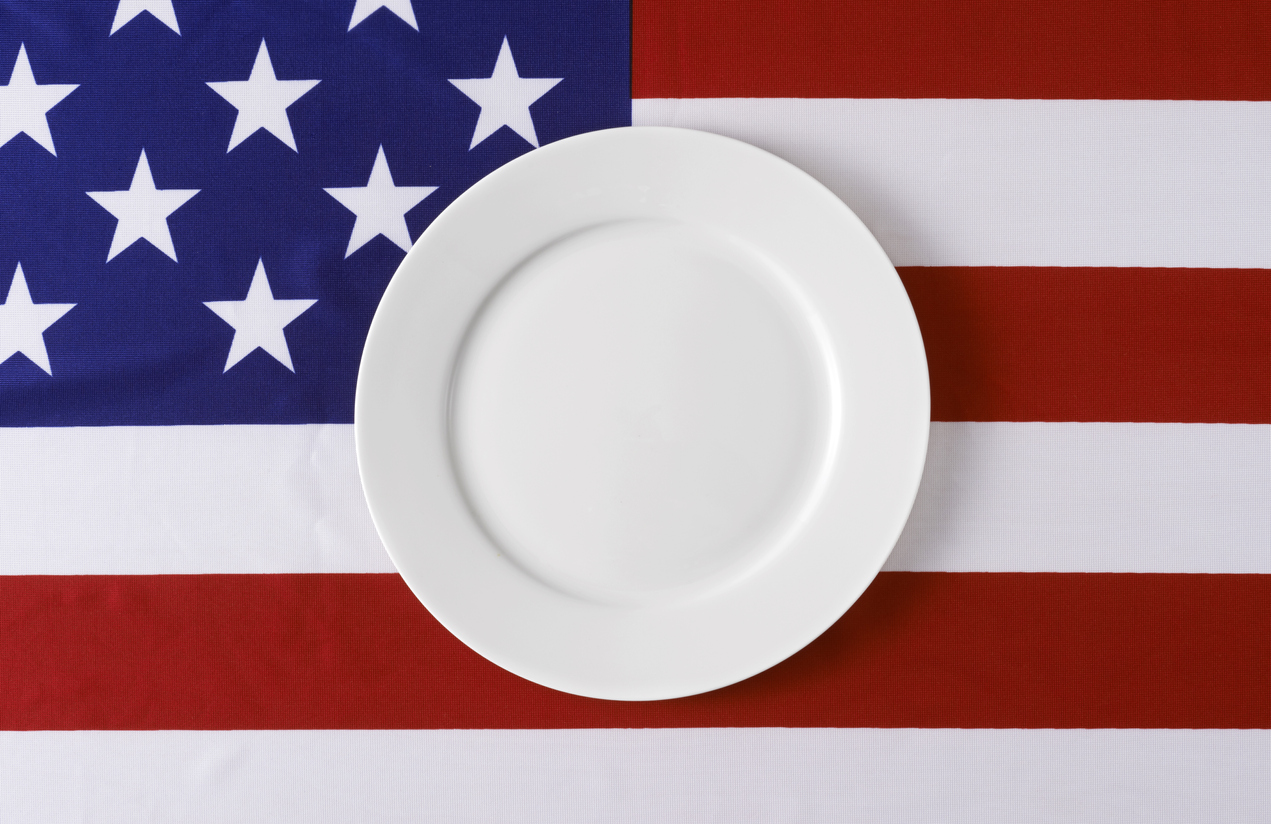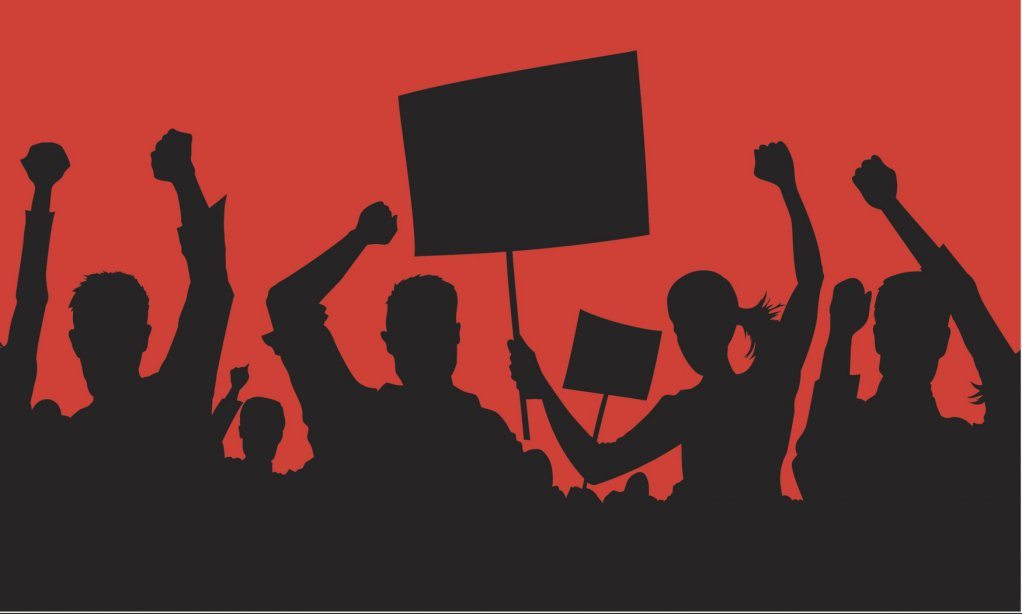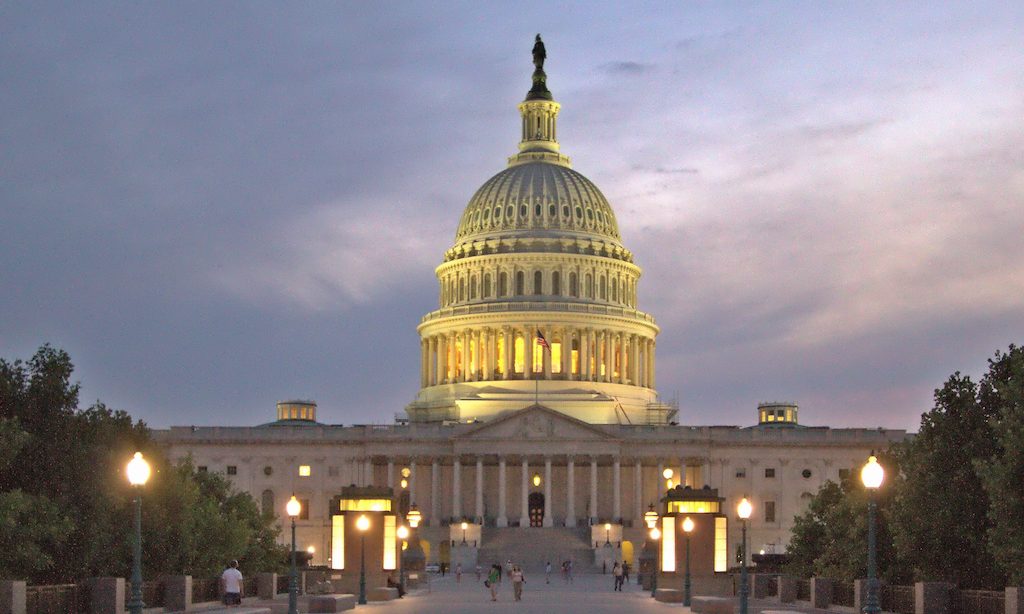Everyone knows that food banks feed hungry people. There are more than two hundred of them in the United States, usually working as large distribution depots that supply regional charities through a hub-and-spoke system. With the help of more than 61,000 food pantries and soup kitchens, food banks provide some 46 million people with free food each year. Tens of millions of volunteers regularly support the system by donating time and money. All told, it’s a vast anti-hunger network running on giving and goodwill—and collectively, if mobilized, food banks have the potential to be one of the most powerful forces for social justice in American politics.
Except it hasn’t worked out that way. Because while food banks are great at distributing free meals, they tend to do little to challenge the system that creates hunger in the first place.
While many food banks dedicate some portion of their resources to advocating for federal nutrition programs and tax credits for corporate food donations, only a handful actually take a position on wages, housing, or health care—the policies that can most effectively alleviate hunger by attacking its root cause: poverty. In the food bank community, support for these issues remains controversial, with many preferring hing to step out of their comfort zone of delivering free food.
Parts of this story were excerpted from Big Hunger: The Unholy Alliance between Corporate America and Anti-Hunger Groups
Consider the fact that no food bank in California endorsed SB 3, the legislation that increased the state minimum wage to $15 per hour. Or that, when thousands of fast food workers held protests in over 160 cities from 2012 to 2015 in support of a $15 minimum wage, only a handful of anti-hunger groups supported their cause. Or when the City Council of Washington, D.C. passed an ordinance in 2013 mandating that big-box retailers pay their employees a $12.50 minimum wage, none of the local or national D.C.-based anti-hunger groups—most of whom receive six- and seven-figure grants from Walmart—supported the legislation.
This political timidity has blunted food banks’ overall impact. Newly released economic data show that despite the improving economy, food insecurity rates remain stagnant at best: 12.3 percent of the U.S. population currently goes hungry, down from a high of 14.8 percent in 2008, but no better than the 12 percent rate the Census Bureau found when it first started collecting data in 1995. (According to the Economic Policy Institute, slow growth in wages has been central to the lack of progress.) In the past two decades, then, food banks may have filled millions of hungry bellies—but they’ve done nothing to move the overall needle. At the same time, they perpetuate a system that that rewards CEOs with six-figure salaries, while providing corporate donors with billions in tax deductions, earned media, and reduced disposal fees.
What perpetuates this hunger-industrial complex? Rather than focus on short-term solutions, why don’t food banks address the social inequalities that drive hunger?
The reasons are complex, and they can vary from institution to institution. Some food banks lack the requisite leadership to move in this direction. Others simply define their role in terms of social service, rather than social change. Still, one defining feature tends to support this widespread culture of inaction: the composition of each food bank’s board of directors.
This summer, I took a deep look at food bank boards of directors nationwide, updating work I had done in 2013 as part of my book, Big Hunger: The Unholy Alliance between Corporate America and Anti-Hunger Groups. Of the 200 food banks in the Feeding America network (the trade association of food banks), 157 (or 79 percent) listed the employment affiliation of their board members on their websites. Of the 2,586 individuals listed, I broke down their employment status into eight categories: retired; community leader or volunteer; professional such as lawyer, real estate agent or accountant; employee of a nonprofit or church; employee of a college or public sector agency; employee or owner of a business; employee of a Fortune 1000 business or its private sector or internationally-owned equivalent (annual revenues of at least $1.8 billion); and those without any affiliation.
https://www.instagram.com/p/BXgOgRKFTnF/?taken-by=foodbank4nyc
I found that almost 22 percent of these board members work for a Fortune 1000 company (or its privately-owned or international equivalent in size). The greatest concentration of these individuals work for a food-related business, such as a grocer, processor or food service firm, while a smaller but almost equally large number are employed by banks or other financial service firms. (The obligation placed on banks by the Community Reinvestment Act to engage in low-income communities can explain the high degree of their participation on food bank boards.)
The table below shows those companies that have the largest number of employees on food bank boards of directors.
By contrast, I found that only two of these 2,586 board members (.08 percent) were affiliated with a labor union. A further examination of this cohort found a majority of participants to be from the private sector—about half were owners or employees of a for-profit business.
Most striking was the discrepancy between the composition of food bank boards and the clientele that they serve. While I did not track the ethnicity or race of food bank board members, I did scroll through seemingly endless photos of white, middle-aged and elderly board members. That’s a problem. At a national conference of social justice-oriented anti-hunger groups held recently in the Seattle area, food banker after food banker mentioned how the lack of understanding and support of their board members was the key barrier for them to engage in progressive policy advocacy and other justice oriented work. One Washington state food bank employee expressed the disconnect between her organization’s white board and its primarily immigrant clientele as the primary factor in reinforcing her food bank’s contribution to structural racism.
https://www.instagram.com/p/BZjw1tVHCOt/?taken-by=foodbank4nyc
Most food banks do not prioritize accountability to their clients when looking for new board members. For example, lower-income board members wouldn’t necessarily be appealing to food banks that use their boards as fundraising entities, whose responsibilities are routinely and bluntly termed this way: “Give, get, or get off.” As sophisticated organizations with multi-million dollar budgets and significant infrastructure, food banks seek professional board members with the requisite experience to provide effective governance. Given their close relationships with the food industry, it should come as no surprise that they look to colleagues from these firms to serve on their boards. Likewise, as food banks have much in common with the grocery business, board members employed in this sector can help food banks leverage needed technical support and resources to professionalize their operations.
Meanwhile, board members who work in industries that rely on keeping wages low—say, the grocery and fast food industries—can also carry over their company’s financial interests into their volunteer work on food bank boards. It is highly unlikely that, in their volunteer roles, high-level corporate managers will contravene their company’s interests. “They will not do anything to embarrass their employer, or that will cause them problems at work, if it (their vote on a controversial matter) were to go public,” says Kevin Bott, former chief information officer of the shipping company Ryder, Inc.
Food bank leaders differ in terms of how much influence board members who are also members of the business community actually have. Joyce Rothermel, former CEO of the Greater Pittsburgh Community Food Bank, notes that she wanted the food bank to support a living-wage ordinance, but she refrained from bringing it to her board because she knew that members who represented the business community would shoot it down.
“It’s an easy sell to this board to be doing SNAP outreach and advocacy on SNAP. But it is more challenging to convince them that we should work on health care and minimum wage,” says Gloria McAdam, former CEO of Foodshare in Hartford, Connecticut. “They [her board members] are business people with their own business objectives, and they don’t see these things so well in that regard.”
“If I were too out there on living wages, I would get backlash,” she adds. “Walmart is now the biggest donor to food banks.”
Natalie Jayroe, head of the Second Harvest Food Bank in New Orleans, asserts that the corporate employees on her board are not any different from any other board member in terms of their political beliefs. She’s never had “any corporation on my board that threatened to cut off food if we took a certain political position,” she says. But she also believes that “there are very few boards that would give food bankers leeway to fight for a living wage.”
In Los Angeles, Michael Flood, CEO of the LA Regional Food Bank, sees the lack of focus on the root causes of hunger as more a matter of self-censorship, of how far the food bank is willing to go politically, without jeopardizing its credibility or respectability.
It’s difficult to determine the impact of corporate employees have on these organizations’ public policy advocacy choices. But food banks’ undeniably corporate-heavy boards do indicate the extent to which these organizations have strayed from their social justice roots.
Food banks have become “mainstream, respectable, and rich,” according to McAdam, and intend to keep their privileges. Some food bankers contend that their middle-of-the-road political position combined with their connections to the poor enable them to maintain high levels of credibility with the media and policymakers, which they can ultimately use to the benefit of their clients.
Regardless of their impact on advocacy stances, the composition of food bank boards brings up the broader issue of accountability. Most food banks are not membership organizations, and as such do not have a formal accountability mechanism beyond the legal requirements demanded of non-profit organizations. While strong representation from the business community and upper-middle-class professionals on food bank boards enhances the financial viability of these organizations, it also creates an accountability vacuum for them. Without a significant representation of food pantry staff and their clients on food bank boards, food bank decision making will remain in the nutrition-focused safety zone, driven by the economic interests of organizational self-perpetuation rather than the political exigencies of hunger elimination.
“When I feed the poor, they call me a saint,” Hélder Câmara, the Brazilian archbishop, once said. “But when I ask why so many people are poor, they call me a communist.”
Unfortunately, food banks have been too content to treat the symptoms, and not the root causes, of food insecurity. If they really want to do saintly work—and mobilize the majority of Americans who wish to abolish hunger once and for all—they may first need to reconsider who’s offered seats at the boardroom table.











